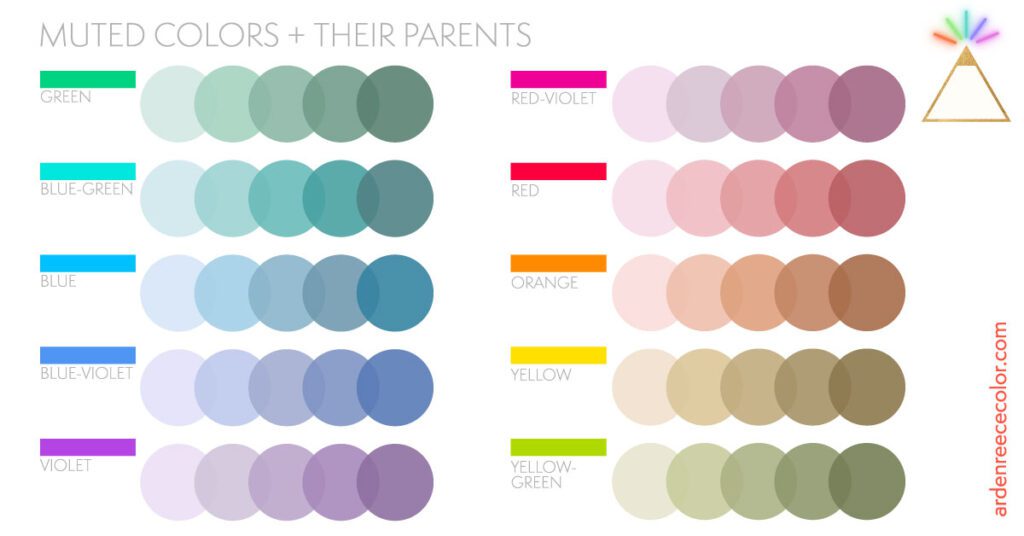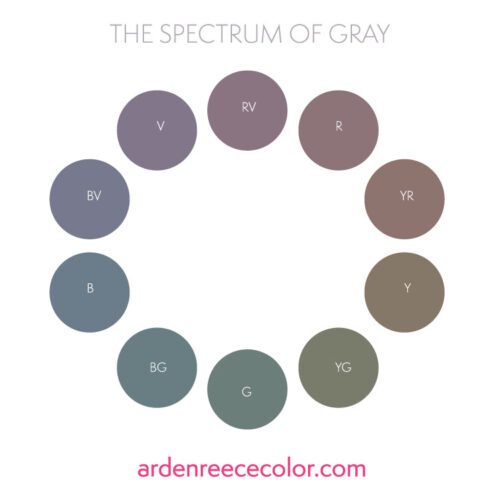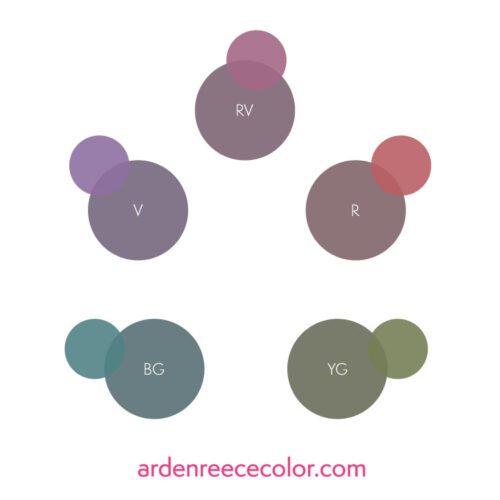Every single color has a parent.
Neutrals are no different.
Neutrals are essentially colors that have reduced amounts of hue and chroma to them. (To create color, we need hue, value and chroma.)
Neutrals can be either light, medium or dark so value plays an important role.
So how do you find out a neutral’s true hue??
Below I show all the color parents (the true hue) and their associated muted colors. (We mute a color by adding gray.)
Many of these can be considered neutrals, especially Orange, Yellow, Yellow-Green and Blue-Violet.

Today, I want to explore the gray neutrals.
I recreated the color wheel below with the mid-range of each hue (5 on the Munsell notation) shown in a 5 value (medium-dark).
You’ll noticed that Blue (B) and Blue-Violet (BV) are the closest to what we consider a cool gray.
Orange (YR) and Yellow (Y) provide us the warmest grays.

In the video below, I provide you some tips for how to uncover the color parent of a gray without doing a DNA test. 😂
All gray neutrals are not alike! You’ll have all types of values and different color parents.
KEY TIP:
When working with neutrals, pair them with colors and neutrals that have the same color parent. This will create a harmonious energy in your home or with your outfit.
Below, I show the grays that were featured in the video with their color parent of the same value.

Sidenote: I didn’t use the Red-Violet (RV) sample but the Target tank could have easily been aligned with it as well.


